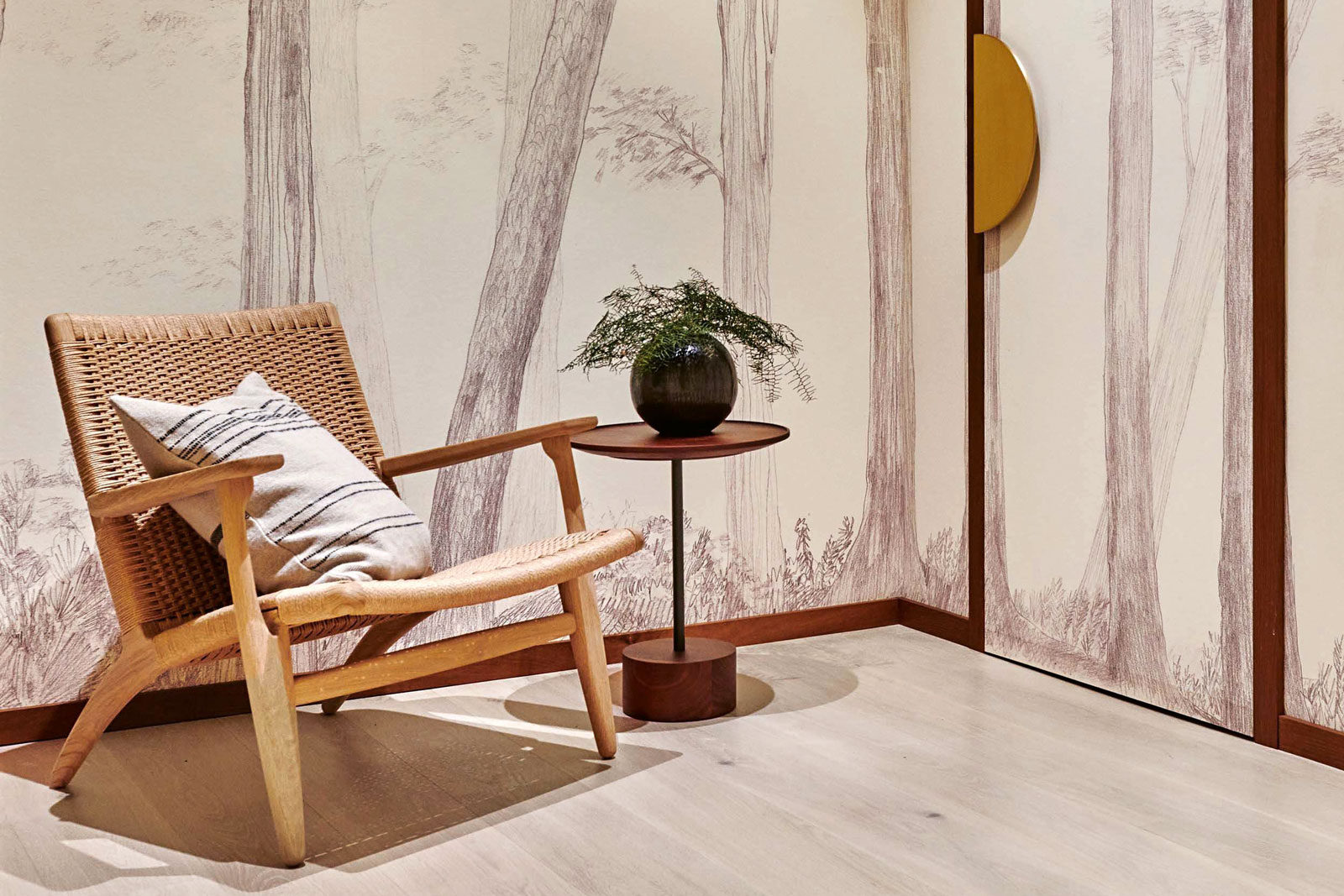
Back in 1885, a newspaper reporter from the Bristol Mercury wrote of a newly opened exhibition in Knightsbridge, London: “The whole scene [is] quaintly Oriental and almost bewildering at the first view in such as no stay-at-home Englishman has ever before had within his reach.” The exhibition in question was the wildly popular Japanese Village, in which up to 100 “genuine natives of Japan” performed daily tasks and rituals around an ersatz Japanese village. During the first five months of its existence—before it burnt to the ground—more than a quarter of a million people paid to gaze upon these human exhibits, their clothes, and their “homes.” It was a recognition (and monetization) of the British hunger for all things Japanese. While it has evolved from this crude start, the European and North American desire for Japanese style has never really waned.
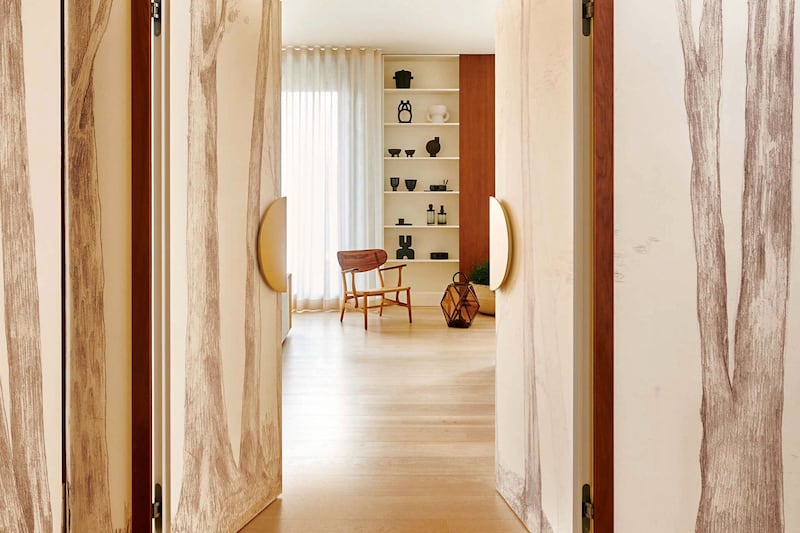
It wasn’t until the mid-19th century that Japanese goods became fashionable in western countries. For more than 200 years, Japan had closed its borders to much of the outside world due to a fear of foreign influence generally, and Christian missionaries in particular. Merchants from the Dutch East India Company were alone among Europeans in being given a toehold: for most of the period, just two of their ships a year, carrying sugar and silk, were allowed to dock at a tiny island within Nagasaki’s harbor. The policy, known as sakoku, was enforced by execution: no westerners, apart from the handful of Dutch traders, were allowed in and no Japanese were allowed out. Japanese nationals who managed to leave the country were barred from re-entry.
As Japan became more inward-looking, western countries—perhaps with a side note
of sourness—sometimes dismissed it as an unsophisticated, even an uncivilized place. When its borders were finally opened to Europeans and Americans—after some strong-arming tactics—access to Japanese goods and crafts sparked a mania in the West. No Victorian drawing room was complete without a Japanese screen or a lacquerware occasional table; no dining room finished without a display of Japanese porcelain. Artists of the day frequently depicted their models in kimonos or with paper parasols, their hair pinned up à la japonaise.
This new style seemed to have a purity, an almost fairy-tale quality, coming from a country that had been shrouded in secrecy and mystery, and led Oscar Wilde to declare, provokingly, “The whole of Japan is a pure invention… There is no such country, there are no such people… The Japanese people are… simply a mode of style, an exquisite fancy of art.”
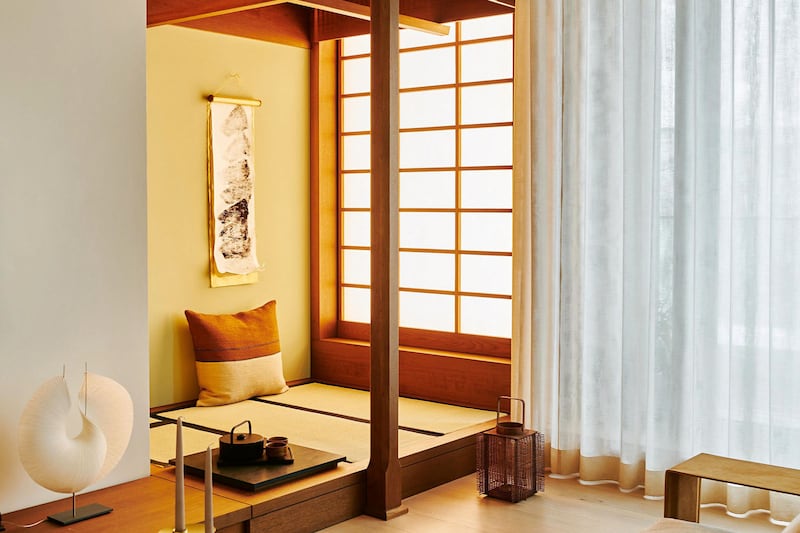
Initially, Japanese products had a rarity factor to them but, as the craze grew, the Japanese factories were unable to keep up with demand. Before long, western countries were producing their own Japanese-style goods and this has continued ever since. Our fascination with Japanese craftmanship, whether it be centuries-old ceramic techniques, delicate pagodas, or the exquisite textiles we associate with Japan, means that the country has had a deep and ongoing influence on our homes, and even our architecture.
Victorians were enchanted by the intricate carving and gilding found in some Japanese temples and palaces and were able to incorporate them into more muscular Gothic buildings, thrilled by what they regarded as a new, lighter, more natural style. The McDonald Mansion in Santa Rosa, California, with its delicately spiky exterior ironwork and Anglo-Japanese hall and staircases, is a wonderful example of this.
Likewise, the Arts and Crafts movement of the late 19th century was heavily influenced
by a more pared-down version of Japanese architecture: the appreciation of simple, natural materials and subtler embellishment using traditional techniques. Even luminaries such as Frank Lloyd Wright, celebrated for his all-American style, incorporated elements of Japanese design into his architecture, having fallen in love with the country’s visual arts as a young man. Homes such as Winslow House—the first of his prairie houses, built long before he visited the country—have a particularly strong Japanese aesthetic.
“When I first saw a fine [Japanese] print… it was an intoxicating thing,” he wrote. “If Japanese prints were to be deducted from my education, I don’t know what direction the whole might have taken.”
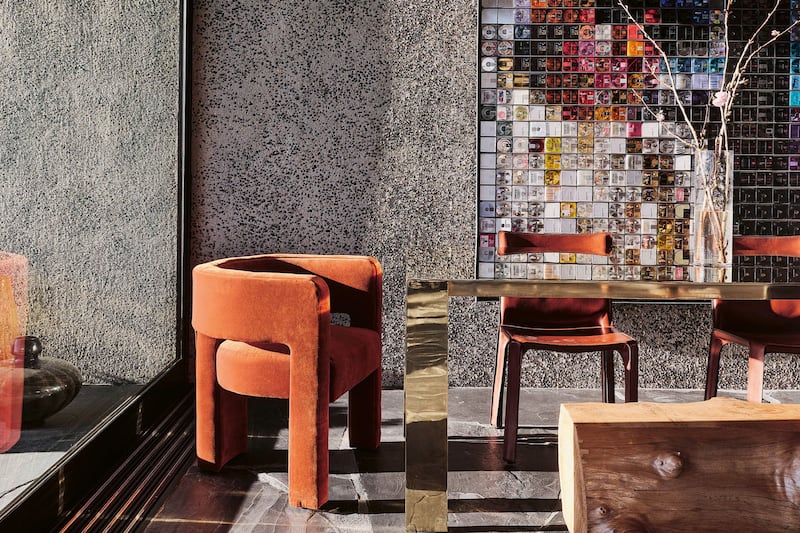
Our love affair continues to this day. Not the furbelows of high Victoriana, perhaps, but a quiet simplicity, which occasionally verges on austerity, but delineates a sumptuous sparseness and conveys a tranquility and order that has been developing since Bauhaus architects first absorbed Japanese ideals.
(A combination of Japanese and Scandinavian design, that other signaler of unadorned luxury, has led to the recent style coinage, Japandi.)
So, what is it that westerners find so irresistible about the Japanese aesthetic? “There’s a number of things in Japan that westerners love,” says Paul Butkovich. Originally from Canada, he has lived in Japan for 25 years and works at H2 Christie’s International Real Estate near Sapporo.
“Some of the modern design is very simple. They love the machiya [traditional townhouse] style and the typically quite light structures we have here. The fact that it’s quite different from what they’re used to is another attraction.” Translating that love of Japanese style into a coherent look away from Japan is another thing altogether. “It’s very hard to synergize the look with western style,” Butkovich says. “You need to have a very good eye.”
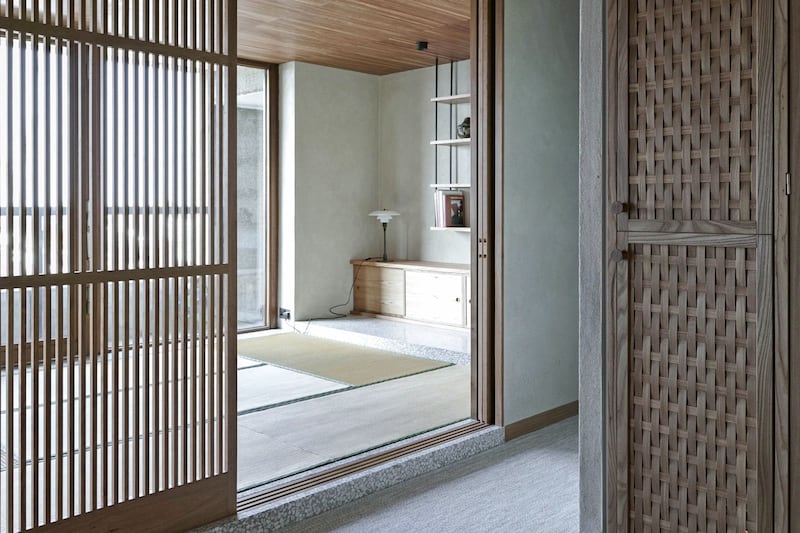
Someone with that instinctive taste is interior designer Brenda Geerlings. When they married 30 years ago, she and her husband chose to honeymoon in east Asia, a region that they fell in love with and have visited many times since. Each time they would buy local goods—furniture, including a wedding chest and a highly decorative kitchen chest. On one occasion, they bought a four-foot-tall (1.2 m), bone-inlaid model of a horse. “It was not practical, but it was very beautiful,” she says.
The couple purchased a 19th-century house, a traditional sea captain’s home, in coastal Newburyport, Massachusetts, in 2011. Rather than refurbish it in high Victorian or even
New England style, Geerlings instead decided to use an aesthetic that celebrated her acquisitions.
“I buy what I love, and I incorporate it, and it does work all together,” she says.
As one might expect of an accomplished interior designer, the home displays a skilled blend of influences, but there is no ignoring the number of Japanese objects and motifs at play within it—whether that be the porcelain figures dotted around it, the use of bamboo, or the precision and symmetry found throughout. Outside, when remodeling the garden, instead of the usual summerhouse or pergola, the couple opted to recreate a Japanese teahouse.
The home is a showcase for Geerlings’ talent and her clients appreciate the “clean, well-defined, straight lines and balance” that she believes are embodied in Japanese design. “It brings a sense of calmness and tranquility and it’s influenced by nature. I like to use natural materials such as textiles and wood.”
Geerlings is not alone in selling an American version of this look. Further along the coast in Maine, author Paul Theroux has marketed his coastal writing retreat, which was built with a strong Japanese aesthetic in mind. Theroux’s first travel memoir, The Great Railway Bazaar, related his journey from the United Kingdom to Japan and launched his travel-writing career. He wrote about the country once again in Ghost Train to the Eastern Star.
Further west, in the small town of North Barrington on the outskirts of Chicago, one set of sellers has created the most stunning Japanese-style garden in the grounds of their home. There are tumbling mini waterfalls complete with little taiko-bashi arched footbridges and a wonderfully rustic torii roofed gateway over the path. The lush planting—which was first started 60 years ago—is an exquisite mix of trees and shrubs familiar from any Japanese print, from water lilies to spiky pines. Through the garden—mimicking in miniature some of the Japanese countryside—runs an intricate model train set with engines powering their way through.
It’s a modern touch not always found in western recreations of Japanese style, and the focus on classical elements of the country’s historic design is something that Japanese people can find slightly baffling. “Generally here antiques aren’t revered,” says Butkovich. “Japanese people want new and shiny, so they’re throwing out things like old shoji [the often translucent screens that divide rooms]. You can pick up fantastic old kimonos that cost $2,000 for $5 in recycle shops.”
Writer’s bio: Gela Pertusini was property editor of The Daily Telegraph and has written for The Times, The Guardian, and The Independent


